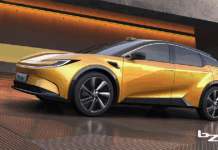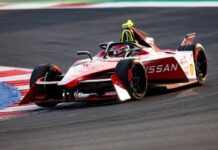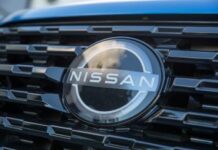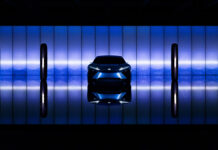Does Toyota still believe in a hydrogen fuel cell-powered future? The unveiling of the second-generation Mirai answers that question.

In 2015, the Toyota Mirai became the first production hydrogen fuel cell electric vehicle (FCEV) offered for sale to retail customers in North America.
Mirai means “future” in Japanese and it fits. Over the past four years, it’s often felt as if the Mirai has remained just outside our grasp — like the future. On the one hand, Toyota has made more than 10,000 of them. On the other, while public-access hydrogen refueling stations only exist in meaningful numbers in California and Hawaii, more states have promised to follow in the future.
Will hydrogen fuel cell vehicles one day be as commonplace as hybrids (which, at last count, topped more than 14.3 million Toyota and Lexus vehicles worldwide)? That remains to be seen. But Toyota remains confident that the technology will take hold.
And to prove the point, the company recently unveiled an all-new second-generation Mirai that will go on sale in late 2020 as a 2021 model.

The Same, But Different
Like its predecessor, the new Mirai is a “plugless” electric vehicle. That means it generates its own electricity onboard from hydrogen, with water as the only tailpipe emission. But just about everything else about the successor is new.
Highlights include:
· An elegant new Mirai Concept based on a premium RWD platform
· A clean, modern profile that sits lower, longer and wider
· A significantly improved FCEV powertrain that increases the driving range by 30 percent
· A more powerful and engaging driving experience
· An interior infused with a hint of futurism without appearing off-putting
· A five-seat vs. four-seat cabin through the improved use of space
In other words, the new Mirai looks different and feels different.
And as the hydrogen refueling infrastructure takes hold, its impact on the marketplace — and the pace of carbon dioxide emissions — could well be quite different, too. California currently has 52 stations with 11 more to open in 2020. Toyota expects the Northeast U.S. network to launch by the end of 2020. If so, the new Mirai will be poised to take full advantage.

An Alternative Fuel Portfolio
The unveiling took place during an intensive four-day media event hosted by Toyota in Greensboro, North Carolina, at the Proximity Hotel — the first hotel to receive LEED Platinum certification from the U.S. Green Building Council. Journalists learned about Toyota’s broader electrification strategy and had the opportunity to test drive the original Mirai as well as current hybrid versions of the Corolla, Avalon, Camry, RAV4, Prius and Prius Prime.
Toyota used the occasion to also announce it will extend its Hybrid Battery Warranty from 8 years/100,000 miles to 10 years from date of first use/150,000 miles, whichever comes first, for all of its new model year 2020 hybrid, plug-in and fuel cell electric vehicles. That makes it the longest such warranty in the industry that covers first and all subsequent owners.
It also used the event to tease the reveal of what will become the most powerful RAV4 yet — the 2021 RAV4 plug-in hybrid.










![– [ ] ☎️CALL NOW!! ????????
– [ ] (786)650-9456 #ydiaztowing
– [ ] ????Best Towing Service in Miami????
– [ ] .
– [ ] .
– [ ] .
…](https://www.miamicars.com/wp-content/uploads/2024/04/440121776_17874173043082011_7981445346465460045_n-100x70.jpg)
![– [ ] ☎️CALL NOW!! ????????
– [ ] (786)650-9456 #ydiaztowing
– [ ] ????Best Towing Service in Miami????
– [ ] .
– [ ] .
– [ ] .
…](https://www.miamicars.com/wp-content/uploads/2024/04/439908543_17874173007082011_7616920926361925773_n-100x70.jpg)


![– [ ] ☎️CALL NOW!! ????????
– [ ] (786)650-9456 #ydiaztowing
– [ ] ????Best Towing Service in Miami????
– [ ] .
– [ ] .
– [ ] .
…](https://www.miamicars.com/wp-content/uploads/2024/04/440121776_17874173043082011_7981445346465460045_n-324x160.jpg)